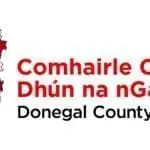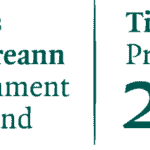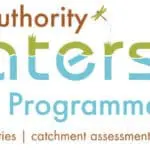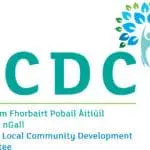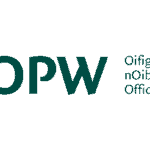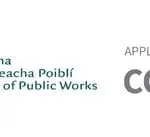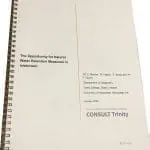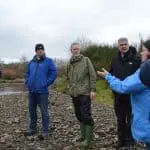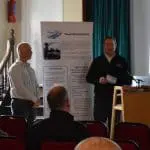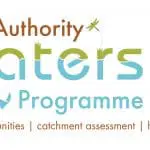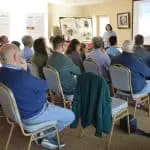Natural Flood Management
Natural Flood Management or Natural Water Retention Measures is a means of alleviating flooding through the use of natural processes.
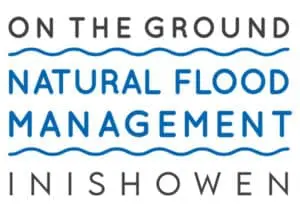 The Inishowen Rivers Trust has recently been awarded €135,000 from the EU LEADER Programme, OPW, Local Authority Waters Programme (LAWPRO) and Donegal County Council to bring nature based flood solutions to the Clonmany area. Over the last three years the Trust has increased our knowledge of Natural Flood Management (NFM) through a series of awareness raising events, a scoping project with Trinity College and community engagement in Carndonagh and Clonmany. You can read more about the background to this work below.
The Inishowen Rivers Trust has recently been awarded €135,000 from the EU LEADER Programme, OPW, Local Authority Waters Programme (LAWPRO) and Donegal County Council to bring nature based flood solutions to the Clonmany area. Over the last three years the Trust has increased our knowledge of Natural Flood Management (NFM) through a series of awareness raising events, a scoping project with Trinity College and community engagement in Carndonagh and Clonmany. You can read more about the background to this work below.
This new project for the Trust engages a number of experts in various fields and is called ‘On the Ground – Natural Flood Management – Inishowen’. The project focuses on the Clonmany area of Inishowen and and will culminate in an implementation stage in the summer of 2021.
The project has three key objectives:
- To implement NFM in the Clonmany area in an effort to reduce flood risk
- To improve water quality and to restore riparian habitats in the upper reaches of the rivers and tributaries
- To build community capacity to maintain NFM and enable the transfer of this knowledge to other locations
This project is funded through the EU LEADER Programme 2014-2020 European Agricultural Fund for Rural Development:
Europe investing in rural areas with additional support from the OPW, LAWPRO and Donegal County Council.
Scope of the Project
‘On the Ground’ will focus on a number of rivers in the Clonmany catchment, in particular, Clonmany River, Ballyhallan River and Cloontagh River but will also look at some of the other tributaries such as the Shivnagh, Clehagh and the Straid. Landowners have identified areas that frequently flood but the significance of this flooding and causative factors need to be looked at in more detail.
NFM measures come in a variety of shapes and sizes but all are based on simple nature based solutions which mimic natural processes and fit in with the hydromorphology of the river channel. The purposes of these measures will be to slow the flow of flood water, and create and improve opportunities for improve soil infiltration (the movement of water through soil). In addition, riparian buffers will be investigated in terms of restoration, flood resilience and habitat development. These are often termed co-benefits from NFM projects and factors such as increased habitat, improved natural corridors etc can be looked at through the project. 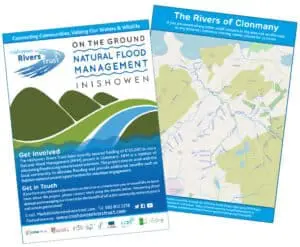
The village of Clonmany and surrounding area has excellent opportunities for installing NFM measures and the feedback from the community and agencies has been very positive. The key agencies that will be engaged as part of the project will include: Donegal County Council, OPW, Inland Fisheries Ireland, EPA and National Parks and Wildlife Service, LAWPRO and Teagasc ASSAP Programme. The involvement of the community is a critical element in the success of projects of this kind, as shown in natural flood management projects such as Stroud, Gloucestershire, UK. Involving the community and landowners in a co-design and co-production capacity harness the local knowledge and combines this with scientific knowledge to deliver the most effective solutions tailored for the local area.
On the Ground – Find out more and get involved.
The IRT will co-ordinate between the agencies, consultants, contractors and landowners and the project will be communicated through the media and locally on the ground. Anyone who wishes to engage in the project can contact the Landowner Liaison Officer Mark Davenport on 083 812 3218 or on [email protected].
In the coming months we will be providing more information through this website on the progress of the project including video footage.
Background
On 22nd August 2017 Inishowen was hit by a severe flooding event. This was a 0.1% flooding event, meaning that a flood of this intensity has a 1% chance of occurring each year. The flood left many devastated areas around the peninsula and there was substantial damage to land, property, homes and livestock. In an effort to understand the flood and look at ways forward, the Inishowen Rivers Trust organised an event in February 2018 entitled ‘Slow the Flow’ which brought flood experts to Inishowen. More details about this event and the presentations made on that day are available here (Slow the Flow). In addition you can read a review of the event in Issue 9: Winter 2018 of the Catchments.ie newsletter.
Following this event the Trust applied for further funding from the Waters & Communities Office to run a series of flooding awareness events. These events ran during September and October 2018 in Carndonagh and featured talks on flood management and woodlands for water. Details of these events can be viewed here – Restoring Rivers and Woodlands for Water.
In 2019 the Inishowen Rivers Trust collaborated with one of Ireland’s foremost experts on flooding and hydromorphology. The Trust engaged the services of Professor Mary Bourke, Trinity College Dublin, to carry out a study into possible options for implementing natural water retention measures in Inishowen. The study is titled ”The Opportunities for Natural Water Retention Measures in Inishowen’ and was funded through a grant from the Office of Public Works.
Prof. Bourke and her team conducted a detailed analysis of the flood risk in areas around Inishowen, examining data and sourcing information from landowners affected by recent floods. Information and knowledge from the community is an important part of this project and the Trust developed a short 10 question survey to gather information from landowners. The final report is now completed and will be launched at an event in the Colgan Hall, Carndonagh on February 14th 2020.

